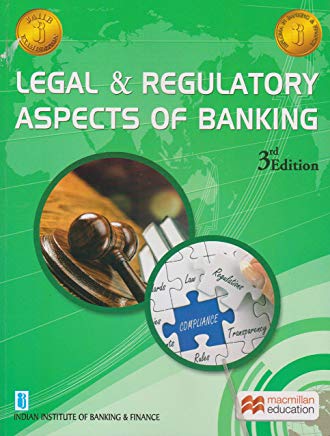JAIIB PPB Unit 33 - Data Communication Network and EFT Systems (Year: 2019)
Data communication consists of various data communication components. It has three basic components.
1. Transmission Devices and Interface Equipment
Modem conversion between the digital and analog forms is carried out by an interface device called Modem
2. Transmission Medium
Terrestrial Cables
a. Twisted-wire Pair - A twisted pair consists of two insulated copper wires
b. Coaxial Cable - The Coaxial cable consist of an inner copper conductor held in position by circular spacers.
c. Optical Fibre - Optical fibre has been a technological breakthrough in communications. It supports data rate of 2 giga bits/sec. Fibre Optics provide high quality transmission of signals at very high speeds. Not affected by electromagnetic interference. The transfer of data is through very thin glass or plastic fibres with a beam of light. The light source is the laser beam driven by a high speed high current driver.
3. Microwave System microwave signals may be passed on to the satellite.
4. Transmission Processors
Message Switcher is used to store and forward data to large number of terminals over a single communication channel.
Multiplexer send more than one signal simultaneously over a single communication channel.
Front End Processors used to intercept and handle communication activities for the host computer. A device located at the site of the CPU or the host computer. It relives the computer of the communication tasks leaving it free for processing application programs.
Modes Of Transmission
Simplex – transmitting data in only one direction (commercial radio)
Half-Duplex – transmission is both directions, but in only one direction at a time. WALKY TALKY
Full Duplex – Simultaneous two-way transmission. MOBILE
Major Networks
INET
NICNET
INDONET
Emerging Trends in Communication Networks For Banking
RBI’s VSAT Network
Internet – The connection to the host computer of the ISP is established through the interface protocol software, using following two protocols :
Serial Line Protocol (SLIP)
Point to Point Protocol (PPP)
Automated Clearing Systems
CHIPS - Clearing House Inter-bank Payment System
CHAPS – Clearing House Automated Payment System
CHATS – Clearing House Automated Transfer System.
Two-Level Funds Transfer System
Fed Wire
Bank Wire
Point of Sale Systems
NationalElectronicFundsTransfer (NEFT)System
1. Amount - There is no minimum or maximum amount to be remitted.
2. Batches: The settlement of transactions is in batches.
3. Normally, the beneficiary should get credit within 2 hours from the time of completion of batch i.e. on B+2 basis on the same day.
4. Processing Charges/Service Charges: Upto Rs 10,000: Maximum Rs 2.5; Upto Rs 1 lac: Maximum Rs 5; More than 1 lac to Rs 2 lac: Rs 15; More than Rs 2 lac: Max Rs 25. (Service tax extra). Update yourselves with latest charges.
5. Difference between IFS Code and MICR: Indian Financial System Code (IFSC) is an alpha numeric code designed to uniquely identify the bank-branches in India. This is 11 digit code with first 4 characters representing the banks code, the next character reserved as control character (Presently 0 appears in the fifth position) and remaining 6 characters to identify the branch. The MICR code has 9 digits to identify the bank-branch. IFSC code is printed on cheques leaves issued to their customers.
Real-Time Gross Settlement (RTGS) System
PI – Participant Interface.
1. The message is passed on by PI to IFTP (Inter – Bank Fund Transfer Processor) which acts as a broker.
2. RTGS system is a funds transfer mechanism where transfer of money takes place from one bank to another on a "real time" and on "gross" basis.
3. This is the fastest possible money transfer system through the banking channel.
4. RTGS helps in preventing Systemic and Settlement Risks.
5. Minimum/maximum amount for RTGS transactions : Minimum amount : Rs 2 lakh; Max : No limit.
JAIIB Study Material
| JAIIB Paper 1 Study Material |
| JAIIB Paper 2 Study Material |
| JAIIB Paper 3 Study Material |


